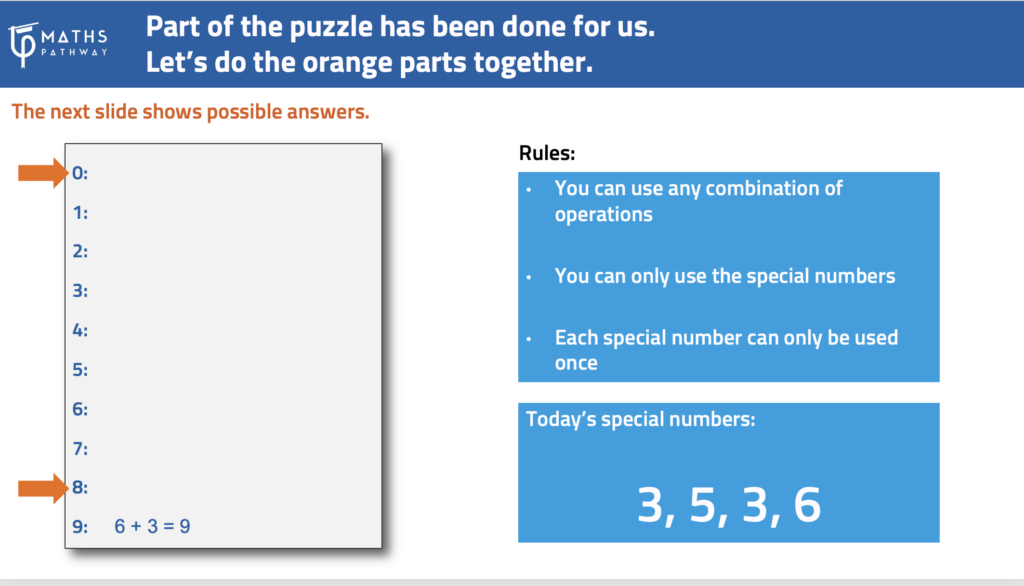
What are energisers for?
In any lesson where students are working on modules, it’s good to run one or two energisers. They can be used to:
- Kick off a lesson with the whole class engaged in something together, or
- Break up a long lesson so students aren’t having to concentrate on modules for too long.
The main purpose of energisers is to help provide structure to the lesson, break up module time into reasonable chunks, and reinforce students’ emotional associations within the classroom: class cohesion, connection with the teacher, and overall feeling of safety/belonging.
Because of this, energisers don’t strictly need a “mathematical” learning intention to be effective, so some are just fun short activities. However, most energisers do contribute to mathematical learning objectives. Examples include:
- Building fluency with number
- Exploring estimation strategies
- Searching for patterns
- Using mathematical vocabulary
- Working with shape properties or number properties
- Reasoning logically
- Seeing how mathematics will be relevant to their future careers
- Broadening the sense of what mathematics is, beyond those areas covered in school
- Encountering some of the beauty and excitement in mathematics
- here is a tricky transition within the lesson. After running a mid-lesson energiser, the transition after that – to get back onto module work – can be a little tough. Some techniques that people use to help with this include: 2 minutes of silent working, or getting students to set a target for what they want to achieve over the remainder of the lesson.